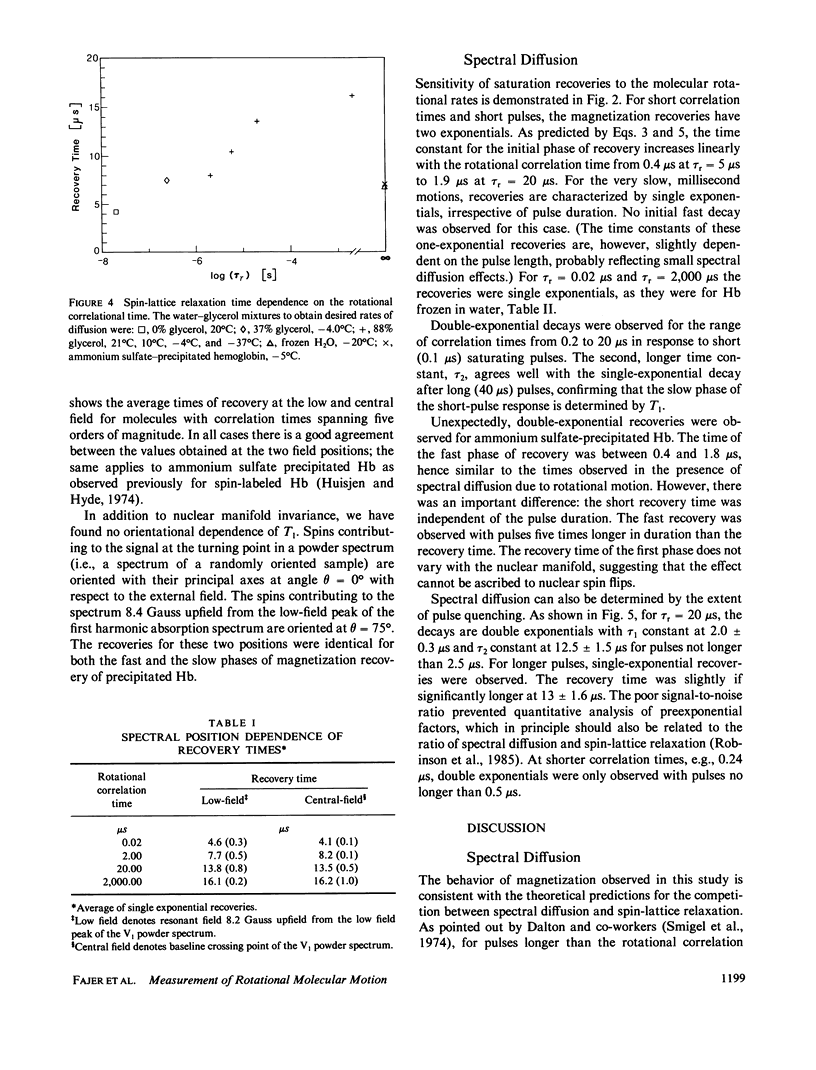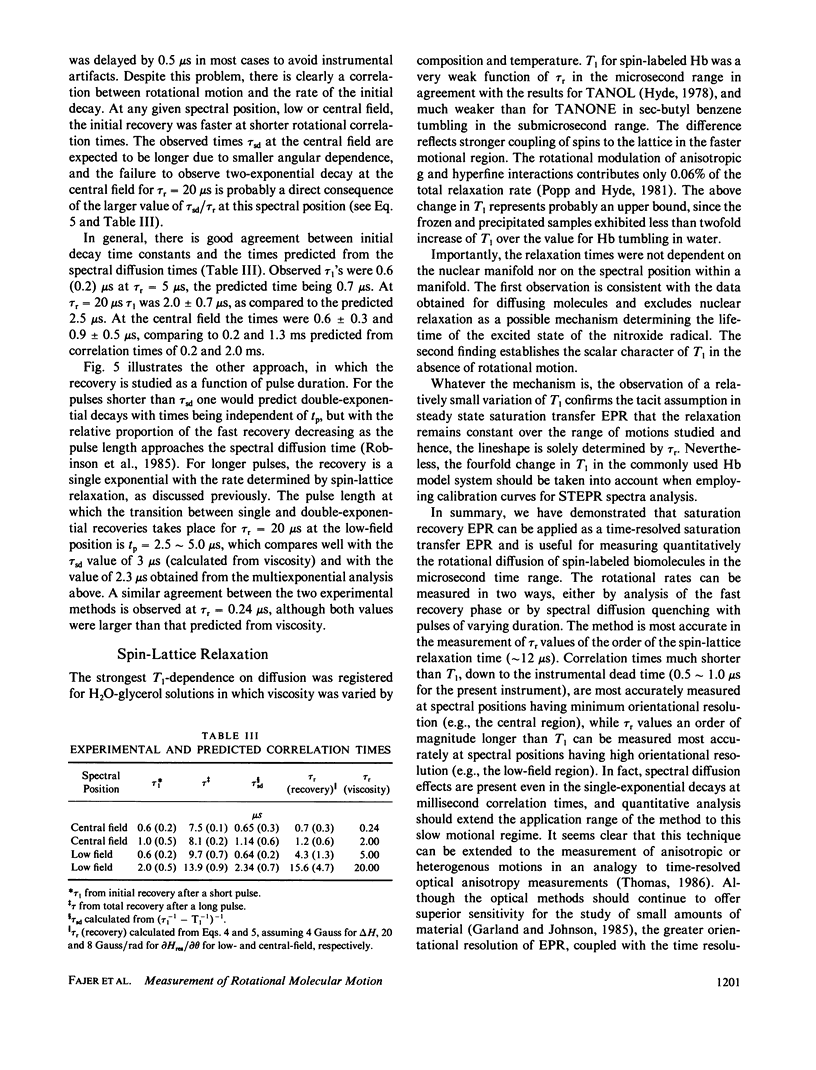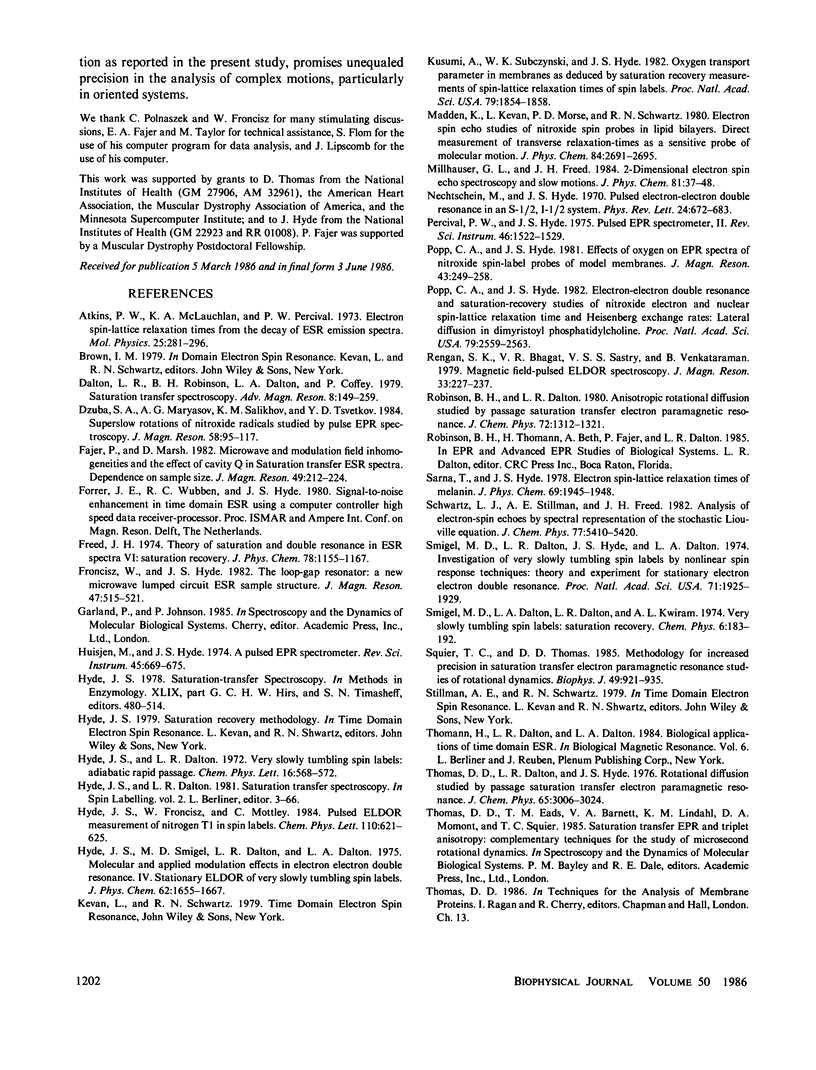Abstract
We have used saturation-recovery electron paramagnetic resonance (SR-EPR), a time-resolved saturation transfer EPR technique, to measure directly the microsecond rotational diffusion of spin-labeled proteins. SR-EPR uses an intense microwave pulse to saturate a spin population having narrow distribution of orientations with respect to the magnetic field. The time evolution of the signal is then observed. The signal increases in time as saturation is relieved by spin-lattice relaxation (Tl) as well as by saturation transfer due to spectral diffusion (Tsd), which is a function of rotational diffusion (Tr) and spectral position. In the presence of both events, the recovery is biphasic, with the initial phase related to both Tr and Tl, and the second phase determined only by Tl. We have measured the saturation recoveries of spin-labeled hemoglobin tumbling in media of known viscosities as a function of rotational correlation time (Tr) and pulse duration (tp). The Tr values estimated from the initial phase of recovery were in good agreement with theory. Variation of the pulse time can also be used to determine Tr. For tp less than Tsd, the recoveries were observed to be biphasic, for tp greater than Tsd a single-exponential. T1 values were determined from the recoveries after pulses quenching spectral diffusion or from the second phase of recovery after shorter pulses. These results demonstrate that SR-EPR is applicable to the study of motion of spin-labeled proteins. Its time resolution should provide a significant advantage over steady state techniques, particularly in the case of motional anisotropy or system heterogeneity.
Full text
PDF







Selected References
These references are in PubMed. This may not be the complete list of references from this article.
- Kusumi A., Subczynski W. K., Hyde J. S. Oxygen transport parameter in membranes as deduced by saturation recovery measurements of spin-lattice relaxation times of spin labels. Proc Natl Acad Sci U S A. 1982 Mar;79(6):1854–1858. doi: 10.1073/pnas.79.6.1854. [DOI] [PMC free article] [PubMed] [Google Scholar]
- Popp C. A., Hyde J. S. Electron-electron double resonance and saturation-recovery studies of nitroxide electron and nuclear spin-lattice relaxation times and Heisenberg exchange rates: lateral diffusion in dimyristoyl phosphatidylcholine. Proc Natl Acad Sci U S A. 1982 Apr;79(8):2559–2563. doi: 10.1073/pnas.79.8.2559. [DOI] [PMC free article] [PubMed] [Google Scholar]
- Smigel M. D., Dalton L. R., Hyde J. S., Dalton L. A. Investigation of very slowly tumbling spin labels by nonlinear spin response techniques: theory and experiment for stationary electron electron double resonance. Proc Natl Acad Sci U S A. 1974 May;71(5):1925–1929. doi: 10.1073/pnas.71.5.1925. [DOI] [PMC free article] [PubMed] [Google Scholar]
- Squier T. C., Thomas D. D. Methodology for increased precision in saturation transfer electron paramagnetic resonance studies of rotational dynamics. Biophys J. 1986 Apr;49(4):921–935. doi: 10.1016/S0006-3495(86)83720-1. [DOI] [PMC free article] [PubMed] [Google Scholar]


